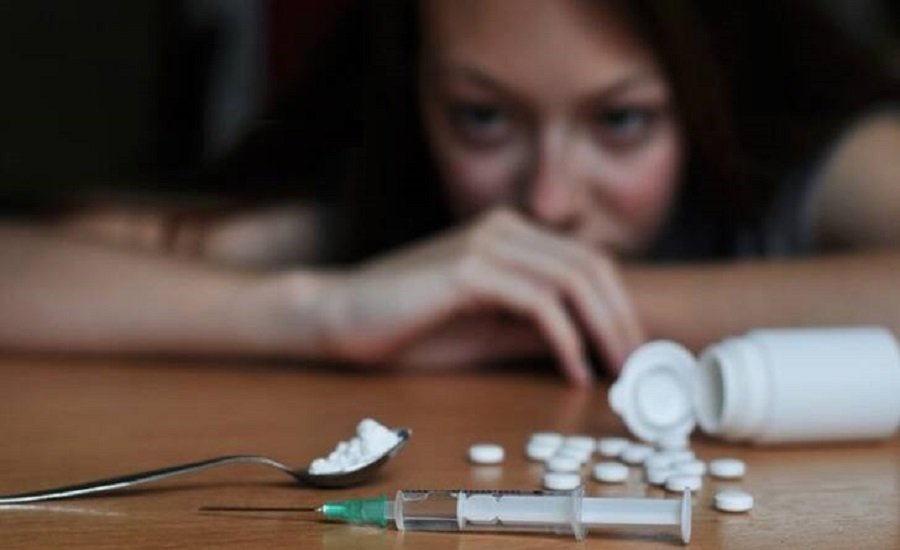Health And Fitness
Understanding the Symptoms of the Monkeypox Virus
Understanding the Symptoms of the Monkeypox Virus
The Monkeypox virus presents a significant public health concern. Understanding the symptoms of the Monkeypox virus is crucial for early detection and effective management. Recognizing the signs can help individuals seek timely medical attention, reducing the spread of the virus. Increased awareness contributes to better health and fitness outcomes for communities worldwide.
What is the Monkeypox Virus?
Definition and Background
Origin of the Virus
The Monkeypox virus, a member of the Orthopoxvirus genus, was first identified in 1958 during outbreaks in colonies of monkeys kept for research. Despite its name, the true reservoir of the virus remains uncertain. Scientists suspect African rodents and non-human primates, such as monkeys, might harbor the virus and transmit it to humans.
Transmission Methods
The Monkeypox virus primarily spreads through zoonotic transmission, meaning it transfers from animals to humans. This often occurs in regions close to tropical rainforests where virus-carrying animals, such as squirrels and various rodent species, reside. Human-to-human transmission also occurs. Direct contact with infectious skin or mucocutaneous lesions, respiratory droplets, or contaminated objects facilitates this spread. Vertical transmission from mother to child has been documented. Close personal contact, including sexual contact, increases the risk of transmission.
Epidemiology
Geographic Distribution
The Monkeypox virus predominantly affects central and west Africa. The virus persists in these regions due to the proximity of human populations to natural reservoirs. However, since May 2022, cases have emerged in areas previously unreported for Monkeypox transmission. This expansion highlights the need for global awareness and preventive measures.
Recent Outbreaks
Recent outbreaks have occurred in various parts of the world. Notably, the United Kingdom reported cases in individuals with a history of travel to Nigeria. These incidents underscore the virus’s potential for international spread. Increased travel and global connectivity contribute to the wider distribution of the virus. Public health initiatives must adapt to these changing patterns to effectively manage and contain outbreaks.
Symptoms of the Monkeypox Virus
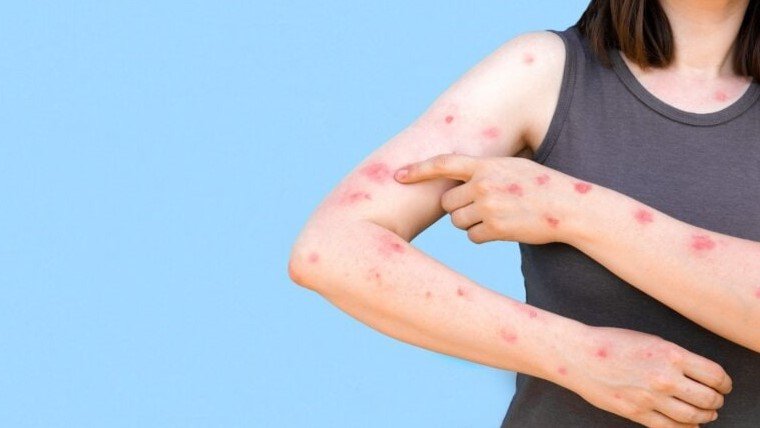
image source:healthshot
Fever and Chills
The onset of the Monkeypox virus often begins with fever. Elevated body temperature serves as an initial indicator of infection. Chills frequently accompany fever, causing discomfort. These symptoms signal the body’s immune response to the virus.
Headache and Muscle Aches
Headaches commonly occur in the early stages of Monkeypox virus infection. Pain can range from mild to severe. Muscle aches also manifest, affecting various parts of the body. These symptoms contribute to overall malaise and fatigue.
Progressive Symptoms
Rash Development
As the infection progresses, a distinctive rash appears. The rash typically starts on the face before spreading to other body parts. The rash can resemble pimples or blisters. It often affects the hands, feet, chest, genitals, and anus. The appearance of the rash marks a critical phase in the disease’s progression.
Lesion Stages
Lesions undergo several stages during the course of the Monkeypox virus infection. Initially, lesions appear as macules, which are flat and discolored. They then evolve into papules, which are raised and firm. Vesicles form next, filled with clear fluid. Pustules follow, containing pus. Finally, scabs develop and eventually fall off. Each stage provides insight into the infection’s severity and duration.
Severe Symptoms
Complications
Severe cases of the Monkeypox virus can lead to complications. Secondary bacterial infections may occur due to skin lesions. Respiratory distress can arise from extensive lesions in the respiratory tract. Encephalitis, an inflammation of the brain, represents a rare but serious complication. Careful clinical examination is crucial for identifying and managing these complications.
Risk Factors
Certain factors increase the risk of severe Monkeypox virus infection. Immunocompromised individuals face higher susceptibility. Young children and pregnant women also represent vulnerable groups. Close contact with infected individuals or animals heightens the risk of transmission. Awareness of these risk factors aids in preventive measures and early intervention.
Stages of the Monkeypox Virus
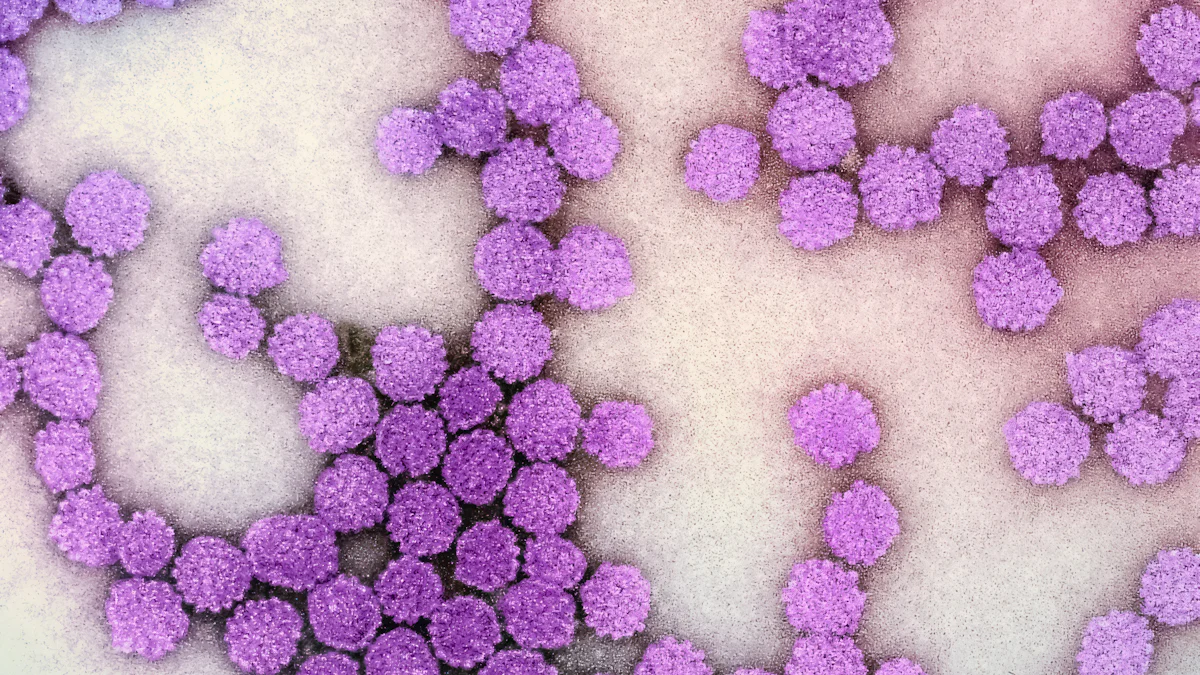
Image Source: unsplash
Duration
The incubation period of the Monkeypox virus typically lasts between 5 to 21 days. During this phase, the virus remains dormant within the host’s body. No visible symptoms appear during this period.
Symptom Onset
Symptom onset marks the end of the incubation period. Initial signs include fever, chills, and muscle aches. The appearance of these symptoms indicates the transition to the next stage of infection.
Prodromal Stage
Initial Symptoms
The prodromal stage of the Monkeypox virus begins with flu-like symptoms. Fever, headache, and swollen lymph nodes are common. Muscle aches and backache also occur. These symptoms signal the body’s immune response to the virus.
Duration
The prodromal stage usually lasts 1 to 3 days. This short duration precedes the more visible manifestations of the disease. Early identification of these symptoms aids in timely medical intervention.
Rash Stage
Rash Progression
The rash stage of the Monkeypox virus involves the development of a distinctive rash. The rash often starts on the face and spreads to other parts of the body. Hands, feet, chest, genitals, and anus are commonly affected areas. The rash resembles pimples or blisters.
Lesion Characteristics
Lesions undergo several stages during the rash phase. Initially, flat discolored spots called macules appear. These evolve into raised, firm papules. Vesicles filled with clear fluid form next. Pustules containing pus follow. Finally, scabs develop and eventually fall off. Each stage provides insight into the infection’s progression and severity.
Diagnosis of the Monkeypox Virus
Clinical Evaluation
Symptom Assessment
Healthcare professionals begin diagnosing the Monkeypox virus by evaluating symptoms. Common early symptoms include fever, chills, headache, and muscle aches. Progressive symptoms such as rash development and lesion stages provide additional diagnostic clues. Severe symptoms like respiratory distress or encephalitis indicate complications. Accurate symptom assessment aids in timely diagnosis and management.
Medical History
Medical history plays a crucial role in diagnosing the Monkeypox virus. Physicians inquire about recent travel to endemic regions, contact with infected individuals, and potential exposure to animals carrying the virus. A detailed medical history helps identify risk factors and guides further diagnostic procedures.
Laboratory Tests
PCR Testing
Polymerase Chain Reaction (PCR) testing remains the gold standard for confirming the Monkeypox virus. Real-time PCR assays detect specific DNA sequences of the virus. Studies published in Am J Trop Med Hyg and J Clin Virol highlight the effectiveness of PCR in identifying both West African and Congo Basin strains. PCR testing provides rapid and accurate results, essential for early intervention.
Serological Tests
Serological tests complement PCR testing by detecting antibodies against the Monkeypox virus. These tests measure the immune response to the infection. Serological tests help confirm past infections and assess immunity levels. Combining PCR and serological tests ensures comprehensive diagnosis and enhances public health and fitness outcomes.
Treatment and Management of the Monkeypox Virus
Medical Treatment
Antiviral Medications
Medical professionals have identified antiviral medications as a crucial component in managing the Monkeypox virus. Drugs initially developed for Smallpox, such as tecovirimat and brincidofovir, have demonstrated effectiveness against the Monkeypox virus. The European Medicines Agency has licensed tecovirimat specifically for Monkeypox treatment. These antiviral drugs help reduce the severity and duration of symptoms, improving health and fitness outcomes for infected individuals.
Symptomatic Relief
Symptomatic relief plays a vital role in the management of the Monkeypox virus. Healthcare providers focus on alleviating symptoms like fever, headache, and muscle aches. Over-the-counter medications, including acetaminophen and ibuprofen, can help manage pain and reduce fever. Topical treatments may provide relief from skin lesions and rashes. Effective symptomatic relief enhances patient comfort and supports overall health and fitness during recovery.
Supportive Care
Hydration and Nutrition
Supportive care is essential for patients with the Monkeypox virus. Proper hydration and nutrition are critical components of this care. Patients should consume adequate fluids to prevent dehydration, especially during the febrile stage. A balanced diet rich in vitamins and minerals supports the immune system and promotes healing. Healthcare providers often recommend oral rehydration solutions and nutrient-dense foods to maintain optimal health and fitness.
Pain Management
Pain management is another key aspect of supportive care for the Monkeypox virus. Patients may experience significant discomfort due to muscle aches, headaches, and skin lesions. Pain management strategies include the use of analgesics and anti-inflammatory medications. Non-pharmacological approaches, such as warm baths and gentle massages, can also provide relief. Effective pain management improves the quality of life for patients and aids in their recovery process.
Prevention of the Monkeypox Virus
Vaccination
Available Vaccines
Vaccination remains a critical tool in preventing the Monkeypox virus. The Imvanex vaccine, initially developed for Smallpox, has shown effectiveness against the Monkeypox virus. Health organizations have authorized the third-generation vaccine MVA for use against both Smallpox and Monkeypox. These vaccines provide cross-protection due to the similarities between the two viruses.
Vaccination Guidelines
Health authorities recommend vaccination for high-risk individuals. This group includes healthcare workers, laboratory personnel, and people who have had close contact with infected individuals. Vaccination guidelines emphasize the importance of receiving the vaccine before exposure to the Monkeypox virus. Post-exposure vaccination can also reduce the severity of the disease if administered promptly.
Preventive Measures
Hygiene Practices
Maintaining proper hygiene practices is essential to prevent the spread of the Monkeypox virus. Regular handwashing with soap and water can significantly reduce the risk of infection. Using alcohol-based hand sanitizers provides an effective alternative when soap and water are unavailable. Cleaning and disinfecting surfaces that may have come into contact with the virus further enhances protection.
Avoiding Contact with Infected Individuals
Avoiding contact with infected individuals is crucial for preventing the Monkeypox virus. Direct contact with skin lesions, bodily fluids, or respiratory droplets from an infected person increases the risk of transmission. People should avoid sharing personal items, such as bedding, clothing, and utensils, with those who have the Monkeypox virus. Health organizations also advise against close physical interactions, including sexual contact, with infected individuals.
Understanding the symptoms of the Monkeypox virus is essential for early detection and effective management. Recognizing signs such as fever, rash, and muscle aches can prompt timely medical attention. Increased awareness contributes to better health outcomes and reduces the spread of the virus.
Public awareness and early detection play a crucial role in controlling outbreaks. The World Health Organization emphasizes the importance of recognizing symptoms and seeking medical advice promptly.
Following preventive measures, including vaccination and hygiene practices, remains vital. Avoiding contact with infected individuals and maintaining proper hygiene can significantly reduce transmission risks.
FAQ: Monkeypox
Q1: What is Monkeypox?
A1: Monkeypox is a rare viral disease caused by the monkeypox virus, part of the same family as the virus that causes smallpox. It leads to a rash, fever, and swollen lymph nodes, among other symptoms. While similar to smallpox, monkeypox is generally less severe.
Q2: How is Monkeypox transmitted?
A2: Monkeypox spreads through close contact with an infected person or animal, or through contact with contaminated materials like bedding. Human-to-human transmission occurs through respiratory droplets, direct contact with bodily fluids, or skin lesions.
Q3: What are the symptoms of Monkeypox?
A3: Symptoms of monkeypox typically include fever, headache, muscle aches, back pain, swollen lymph nodes, chills, and exhaustion. A rash usually appears within 1-3 days after the fever, starting on the face and spreading to other parts of the body.
Q4: How long does it take for Monkeypox symptoms to appear after exposure?
A4: The incubation period for monkeypox is usually 7-14 days, but it can range from 5 to 21 days after exposure.
Q5: Is there a vaccine for Monkeypox?
A5: Yes, vaccines that protect against smallpox are also effective against monkeypox. The JYNNEOS (also known as Imvamune or Imvanex) vaccine is specifically licensed for use against monkeypox in some regions.
Q6: How can I protect myself from Monkeypox?
A6: To protect yourself from monkeypox, avoid contact with animals that could harbor the virus (such as rodents and primates), avoid close contact with infected individuals, practice good hygiene, and use personal protective equipment if you are caring for someone with monkeypox.
Q7: How is Monkeypox treated?
A7: There is no specific treatment for monkeypox, but it can be managed with supportive care. In some cases, antiviral medications like Tecovirimat (TPOXX) may be used to treat severe cases or those at high risk for complications.
Q8: What should I do if I think I have been exposed to Monkeypox?
A8: If you believe you have been exposed to monkeypox, contact your healthcare provider immediately. They can assess your risk and may recommend monitoring for symptoms, vaccination, or antiviral treatment if necessary.
Q9: How severe is Monkeypox, and can it be fatal?
A9: Most cases of monkeypox are mild and resolve on their own within 2-4 weeks. However, in some cases, especially in young children, pregnant women, and individuals with weakened immune systems, monkeypox can be severe or even fatal.
Q10: Has there been an outbreak of Monkeypox recently?
A10: Yes, there have been recent outbreaks of monkeypox, particularly in non-endemic countries. These outbreaks have led to increased awareness and preventive measures to control the spread of the virus.
Q11: Where is Monkeypox most commonly found?
A11: Monkeypox is most commonly found in Central and West Africa, particularly in areas near tropical rainforests where animals that carry the virus are found. However, cases have also been reported in other parts of the world during recent outbreaks.
Q12: Can Monkeypox spread through respiratory droplets like COVID-19?
A12: Monkeypox can spread through respiratory droplets, but it typically requires prolonged face-to-face contact, making it less transmissible than COVID-19. However, precautions should still be taken to avoid close contact with infected individuals.
Health And Fitness
Walgreens Closing 1,200 Stores: A Major Shift in U.S. Retail Pharmacy
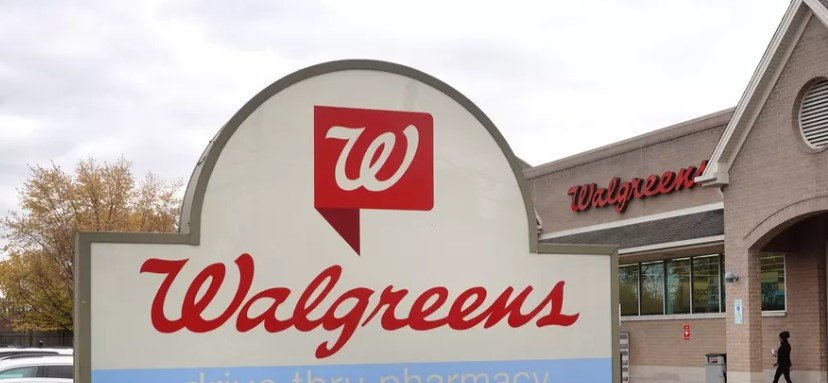
Walgreens has announced plans to close 1,200 stores across the U.S. by 2027 in an effort to optimize its operations. This decision comes after facing profitability challenges, increased competition, and market shifts. CEO Tim Wentworth cited underperforming locations and a difficult consumer environment as primary reasons for the closures. The company aims to focus on its core retail pharmacy business while cutting costs and improving long-term growth potential.
Why Is Walgreens Closing Stores?
Walgreens faces multiple challenges, including shrinking profit margins and decreased foot traffic. In response to inflation and lower consumer spending, the company is streamlining operations by targeting underperforming locations for closure. The ongoing shift to online pharmacies and the rise of competitors like CVS have also put pressure on Walgreens’ brick-and-mortar stores.
Impact on Customers and Communities
Many customers worry about losing access to convenient pharmacy services, especially in smaller communities. However, Walgreens aims to maintain robust service levels by focusing on profitable stores and enhancing its digital offerings. The closures could create opportunities for local pharmacies to fill the gap left by Walgreens in certain areas, though concerns remain about the broader impact on healthcare access.
What’s Next for Walgreens?
Walgreens is not just shutting stores but also revamping its business strategy. The company is reducing its stake in VillageMD and refocusing on pharmacy operations. Walgreens is not just closing stores; the company is also implementing a major shift in its business strategy. This includes reducing its stake in VillageMD and refocusing on its pharmacy operations.
The company will continue to offer retail health services, but with a leaner footprint and improved operational efficiency. As these changes unfold, consumers may see further shifts in how and where they receive pharmacy services. The company’s strategic shift is a response to a changing retail landscape and the need to adapt to changing consumer preferences. Walgreens is making a significant investment in its pharmacy operations to ensure that it can provide the best possible pharmacy care for its customers.
Most Searched Queries Regarding Walgreens Closures:
- “Why is Walgreens closing stores?”
- “List of Walgreens stores closing”
- “Impact of Walgreens closures on healthcare”
- “Alternatives to Walgreens pharmacy services”
Walgreens’ future will depend on how well it adapts to changing consumer preferences and a highly competitive retail landscape.
Financial Struggles & Reduced Profitability
Walgreens has been struggling with reduced profit margins due to inflation, higher shrink (inventory losses from theft and errors), and declining foot traffic. The ongoing changes in the retail pharmacy landscape have prompted Walgreens to reevaluate its operations and shutter underperforming stores. This decision is part of a larger effort to cut costs, streamline its footprint, and optimize the company’s future profitability.
The company is also seeking to improve its ability to compete with other retail pharmacies, such as CVS Health and Rite Aid. Walgreens is also looking to improve its ability to compete with online retailers like Amazon, which have been expanding their healthcare offerings. The decision is also part of a larger effort to cut costs, streamline its footprint, and optimize the company’s future profitability.
Impact on Stock Performance
Walgreens’ financial challenges have caused its shares to drop significantly—over 45% in the last year. In response, the company also lowered its profit forecast for fiscal year 2024 to between $2.80 and $2.95 per share, down from the previous estimate of $3.20 to $3.35 per share.
Customer Service Adjustments
Though the store closures will reduce Walgreens’ physical presence, the company plans to enhance its digital services. It is also reworking its health services, including retail health clinics and pharmacy services, to focus on high-performing regions. Walgreens is reducing its involvement in secondary ventures, like VillageMD, to realign with its core retail pharmacy business.
Workforce Reductions
As part of its cost-cutting strategy, Walgreens recently announced that it will be closing 1,200 stores by 2027. The company also revealed that it will be reducing its workforce, including layoffs across its corporate and retail divisions. While the exact number of job cuts has not been specified, the company has stated that it will be making the necessary changes to ensure its long-term success. This includes layoffs across its corporate and retail divisions, though the company has not specified the exact number of job cuts.
Questions from Consumers
- “How many Walgreens stores are closing?”
- “What will happen to Walgreens employees?”
- “Will Walgreens’ pharmacy services be affected by store closures?”
- “Are there alternatives to Walgreens in my area?”
The closures are part of Walgreens’ strategy to address the rapidly changing retail pharmacy market, ensuring long-term growth while navigating current economic challenges.
FAQs on Walgreens’ Store Closures
1. How many Walgreens stores are closing?
Walgreens plans to close around 1,200 stores by 2027, primarily focusing on underperforming locations.
2. Why is Walgreens closing stores?
Walgreens is closing stores due to declining profit margins, high operational costs, inflationary pressures, and competition from other pharmacies and online retailers.
3. Will pharmacy services be impacted?
While some stores will close, Walgreens intends to enhance its digital pharmacy services to maintain customer access to prescriptions.
4. What will happen to Walgreens employees?
Layoffs are expected as a result of these closures, but the company has not specified the total number of jobs affected.
5. How will this impact local communities?
Closures could lead to reduced access to pharmacy services in certain areas, particularly smaller communities, but Walgreens is working to consolidate operations to maintain essential services.
6. How do I find out if my local Walgreens is closing?
The company will release specific lists of store closures over time, so keep an eye on official announcements or check with your local store.
7. Are there alternatives to Walgreens?
Customers can explore other national chains like CVS, Rite Aid, or local pharmacies, depending on location and services offered.
Health And Fitness
How to Choose a Rehab for Lasting Recovery

Choosing the right rehabilitation center can be one of the most transformative decisions in your journey to sobriety. It’s more than just picking a place—it’s about finding the support system that will walk with you toward lasting recovery and a better quality of life. Did you know that 80% of patients report improved health after completing their programs? With the right rehab center, your chances of staying drug-free after treatment rise to as much as 95%.
The path to recovery is deeply personal, and the rehab center you choose can play a pivotal role in shaping your future. This decision can be the key to unlocking a healthier, happier life. You deserve the best care, so take the time to make an informed choice that will support your long-term success.
Identifying Personal Treatment Goals
Assessing Your Needs
Defining your personal treatment goals helps you focus on what truly matters in your recovery journey. What do you want to achieve? Is it maintaining sobriety, improving your mental health, or rebuilding relationships? By being clear about your goals, you can choose a rehab center that aligns with your vision for a better future.
It’s also important to understand the level of care you need. Some people may thrive in an intensive inpatient program, while others find success in outpatient care. Take a moment to honestly assess your situation. The right support can make all the difference, guiding you toward lasting recovery and a life full of possibility.
Consulting with Treatment Providers
Health And Fitness
Boost Muscle Power Workouts for Athletes

How to Boost Muscle Power: Top Workouts for Athletes
Muscle power is crucial for athletic performance, as athletes depend on generating power rather than solely focusing on maximum strength. Muscle Power Workouts for Athletes are designed to enhance power output, which is a key predictor of success in various sports and also aids in improving mobility among older adults. These workouts are essential for health and fitness, as they focus on exercises that increase explosive strength, tailoring muscles for specific sports. By engaging in these targeted training sessions, athletes can achieve peak performance.
Definition and Importance
What is Muscle Power?
Muscle power refers to the ability of muscles to exert force rapidly. This concept combines strength and speed to produce explosive movements. Athletes rely on muscle power to perform actions like jumping, sprinting, and throwing. The relationship between strength and speed defines muscle power. Training programs often focus on enhancing this attribute to improve athletic performance.
Why is it crucial for athletes?
Athletes benefit from increased muscle power in several ways. Enhanced muscle power contributes to better performance in sports-specific tasks. Activities such as sprinting, jumping, and changing direction quickly require high levels of muscle power. Greater muscle power also reduces the risk of injury by improving the body’s ability to handle dynamic movements. According to research, muscular strength and power significantly influence athletic performance, impacting speed, endurance, and resilience.
Factors Affecting Muscle Power
Muscle Fiber Types
Muscle fibers play a crucial role in determining muscle power. There are two main types of muscle fibers: Type I (slow-twitch) and Type II (fast-twitch). Fast-twitch fibers generate more power and are essential for explosive movements. Athletes with a higher proportion of fast-twitch fibers tend to excel in power-based activities. Training can enhance the efficiency of these fibers, leading to improved performance.
Neuromuscular Efficiency
Neuromuscular efficiency refers to the ability of the nervous system to communicate effectively with muscles. Efficient neuromuscular function allows for quicker and more powerful muscle contractions. Athletes can improve neuromuscular efficiency through specific training techniques. Exercises that emphasize speed and coordination help enhance this connection. Improved neuromuscular efficiency results in better force production and overall athletic performance.
Muscle Power Training for Beginners: Improve Flexibility and Mobility
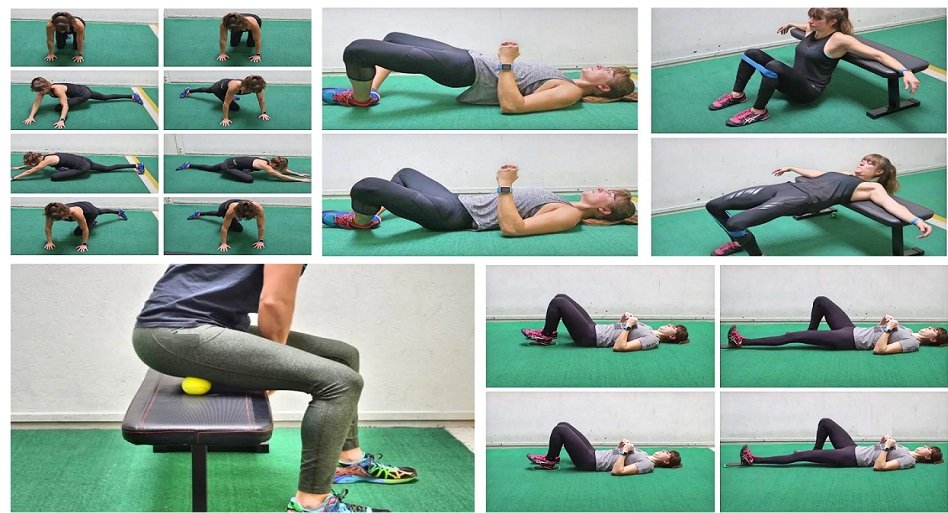
Flexibility is a crucial component of physical fitness, but for many people, tightness and stiffness in the body can make stretching uncomfortable or intimidating. If you’re not very flexible, this 8-minute stretching routine is designed for you. It’s simple, requires no equipment, and addresses all the major muscle groups to help improve your mobility. Say goodbye to complicated yoga poses and advanced stretches—this is all about practical movements that will gently loosen up your muscles and joints.
1. Lumbar Rotation Stretch
This stretch targets the lower back and hips, two areas where many people experience tightness.
How to Do It:
- Lie on your back with your right knee bent.
- Use your left hand to grab the outside of your right knee and gently pull it over to your left side, allowing your body to twist.
- You should feel a stretch through your lower back and hip.
- Hold this position for 30 seconds.
Tip: Keep your movements slow and controlled, and only twist as far as is comfortable for your body.
2. Supine Hamstring Stretch
Hamstrings are often one of the tightest muscle groups, especially if you sit for long periods.
How to Do It:
- Lie on your back with your left leg straight.
- Cup both hands behind your right knee.
- Slowly straighten your right leg toward the ceiling until you feel a stretch in the back of your thigh (hamstring).
- Hold for 30 seconds, then switch legs.
Tip: Be sure not to force your leg straight; aim for a gentle stretch without pain.
3. Piriformis Stretch
The piriformis is a small muscle deep in the hip that can cause discomfort when tight. This stretch can relieve tension in the hips and lower back.
How to Do It:
- Cross your right leg over your left knee, forming a “figure four.”
- Grab your left knee and pull it toward your chest until you feel a stretch in your right hip.
- Hold for 30 seconds, then switch sides.
Tip: This is an excellent stretch for reducing tightness that contributes to sciatica or hip discomfort.
4. Tall Kneeling Hip Flexor Stretch
Your hip flexors can get tight from sitting too much, which can affect your posture and mobility. This stretch helps to lengthen those muscles.
How to Do It:
- Kneel on your right knee and take a large step forward with your left foot.
- Shift your weight forward, keeping your back straight, until you feel a stretch in the front of your right hip.
- Hold for 30 seconds, then switch sides.
Tip: Keep your torso upright and avoid arching your lower back.
5. Kneeling Hamstring Stretch
This is another great stretch for your hamstrings, but from a kneeling position.
How to Do It:
- From the tall kneeling position, shift your weight back onto your right knee.
- Straighten your left leg in front of you.
- Keep your back straight and lean forward from the hips until you feel a stretch in your left hamstring.
- Hold for 30 seconds, then switch sides.
Tip: Engage your core to avoid rounding your back during this stretch.
6. Seated Spine Rotation Stretch
Spinal mobility is essential for everyday movements like bending and twisting. This stretch helps to loosen up your mid and upper back.
How to Do It:
- Sit with your legs out in front of you.
- Cross your left leg over your right, planting your left foot flat on the floor.
- Twist your torso to the left, placing your right elbow on the outside of your left knee for leverage.
- Hold the stretch for 30 seconds, then switch sides.
Tip: This stretch may cause a few pops in your back, but that’s perfectly normal as long as there’s no pain.
7. Child’s Pose Stretch
The child’s pose is a classic yoga stretch that targets the entire back, especially the lats and spine.
How to Do It:
- Start on all fours (hands and knees).
- Sit your hips back toward your heels while reaching your arms forward.
- Tuck your chin into your chest and sink into the stretch, feeling the lengthening in your back.
- Hold for 30 seconds.
Tip: Breathe deeply and let your body relax into the stretch for maximum benefit.
8. Upper Back Extension
This movement opens up the chest and stretches the upper back, perfect for counteracting poor posture from sitting.
How to Do It:
- Sit or stand with your fingertips behind your head.
- Bring your elbows together and fold forward slightly.
- Then, lift your chest and elbows up, opening through your upper back and chest.
- Repeat this movement three times.
Tip: This dynamic stretch is excellent for improving posture and chest mobility.
9. Upper Traps Stretch
The trapezius muscles in the neck and upper back can get very tight, especially if you spend a lot of time hunched over a computer or phone.
How to Do It:
- Tilt your head to the left, bringing your left ear toward your left shoulder.
- Use your left hand to gently apply pressure to the right side of your head.
- Hold for 30 seconds, then switch sides.
Tip: Keep the stretch gentle—this is a sensitive area, and too much pressure can cause discomfort.
Plyometric Exercises
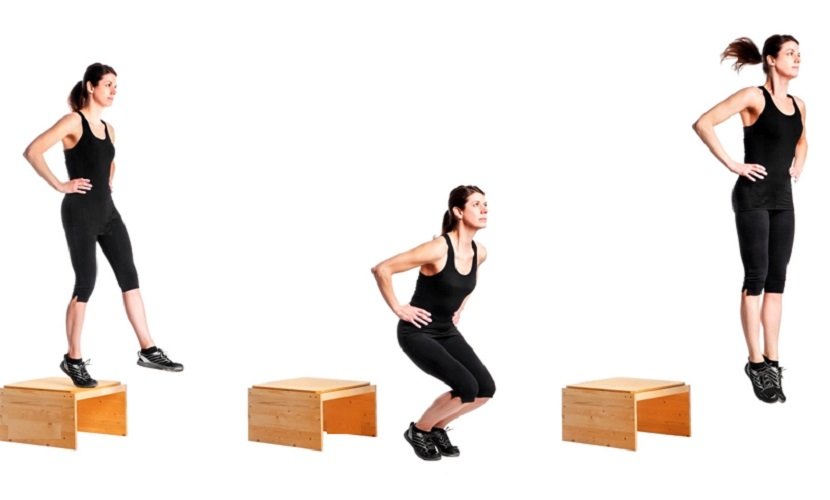
Box Jumps
Box jumps enhance explosive power. Athletes use box jumps to improve vertical leap and agility. The exercise involves jumping onto a raised platform. Box jumps require coordination and strength. Consistent practice increases muscle power and reduces injury risk.
Depth Jumps
Depth jumps focus on rapid force production. Athletes step off a box and immediately jump upon landing. This exercise trains muscles to react quickly. Depth jumps improve neuromuscular efficiency. Athletes gain better performance in sports requiring quick direction changes.
Olympic Weightlifting
Clean and Jerk
The clean and jerk builds total body power. Athletes lift a barbell from the ground to overhead. This movement combines strength and speed. The clean and jerk enhances muscle power and coordination. Regular training improves athletic performance in explosive sports.
Snatch
The snatch develops explosive strength. Athletes lift a barbell from the ground to overhead in one motion. This exercise requires precision and power. The snatch increases muscle power and flexibility. Athletes benefit from improved performance in dynamic sports activities.
Sprint Training
Short Distance Sprints
Short distance sprints boost speed and power. Athletes run at maximum effort for short distances. This training enhances fast-twitch muscle fibers. Short sprints improve acceleration and agility. Athletes gain an edge in sports demanding quick bursts of speed.
Hill Sprints
Hill sprints increase lower body strength. Athletes sprint uphill to build muscle power. This exercise challenges endurance and explosiveness. Hill sprints improve cardiovascular fitness and leg strength. Athletes experience enhanced performance in endurance-based sports.
Case Studies show that integrating these Muscle Power Workouts for Athletes leads to significant improvements. Research highlights the effectiveness of combining strength and ballistic-power training. Athletes achieve better results through targeted programs. These workouts reduce injuries and enhance overall performance.
Programming Ideas for Power Development
Periodization Techniques
Linear Periodization
Linear periodization involves a structured progression in training intensity. Athletes start with high-volume, low-intensity workouts. Over time, the focus shifts to low-volume, high-intensity sessions. This method enhances muscle power by gradually increasing the load on muscles. Research shows that linear periodization can lead to significant strength gains. Coaches often use this technique to prepare athletes for peak performance during competitions.
Undulating Periodization
Undulating periodization offers more variation in training. Athletes alternate between different intensities and volumes within a week. This approach prevents training plateaus and keeps workouts engaging. Studies indicate that undulating periodization can produce similar strength gains as linear models. Athletes benefit from the flexibility and adaptability of this method. Coaches can tailor programs to meet specific needs and goals.
Integrating Power Workouts into Training
Weekly Training Schedule
A well-structured weekly training schedule maximizes power development. Athletes should include a mix of strength, speed, and endurance sessions. Each week might feature two to three power-focused workouts. These sessions could involve plyometrics, Olympic lifts, or sprint drills. Rest days are crucial for recovery and muscle growth. Monitoring progress helps in adjusting the schedule for optimal results.
Balancing Power and Endurance
Balancing power and endurance is essential for comprehensive athletic performance. Athletes should incorporate both elements into their training regimen. Power workouts enhance explosive strength and speed. Endurance sessions build stamina and cardiovascular health. A balanced approach ensures athletes maintain peak performance across various sports demands. Coaches can design programs that integrate both aspects effectively.
-

 Health And Fitness6 months ago
Health And Fitness6 months agoPepsi Zero Sugar vs Diet Pepsi: Which Is Healthier?
-
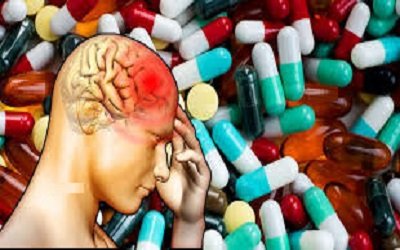
 Health And Fitness5 months ago
Health And Fitness5 months agoHow to Choose a Rehab for Lasting Recovery
-

 News6 months ago
News6 months agoKolkata Doctor Case: Tragic Story of Dr. Moumita Debnath
-

 News6 months ago
News6 months agoLondon King Opens Up About Her Relationship with Rob Schneider
-

 News6 months ago
News6 months agoSunita Williams’ Space Dilemma: Never Alone, Always Brave
-

 Tech Innovation5 months ago
Tech Innovation5 months agoHuawei Mate XT: A Detailed Review of the World’s First Tri-Fold Smartphone
-

 Sports6 months ago
Sports6 months agoArshad Nadeem Winning Moments Javelin Throw Final Highlights
-

 Travel & Events4 months ago
Travel & Events4 months agoWarped Tour 2025: Festival Grounds at RFK Campus


